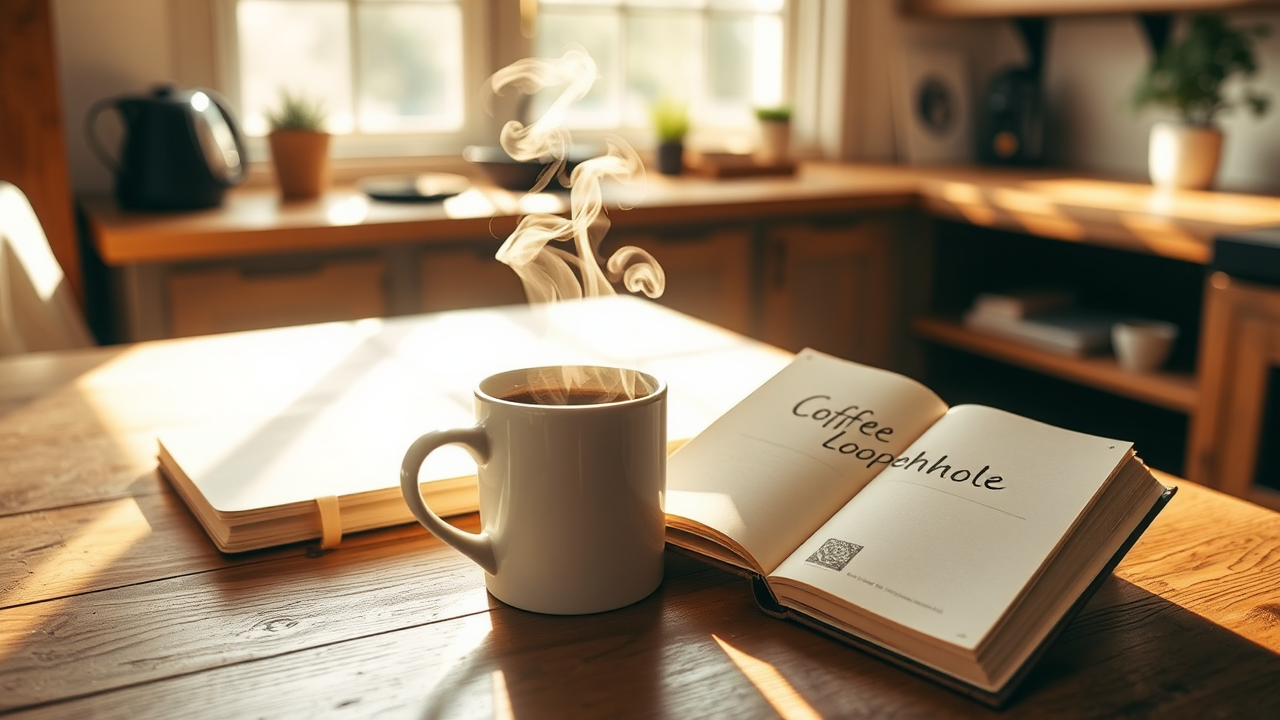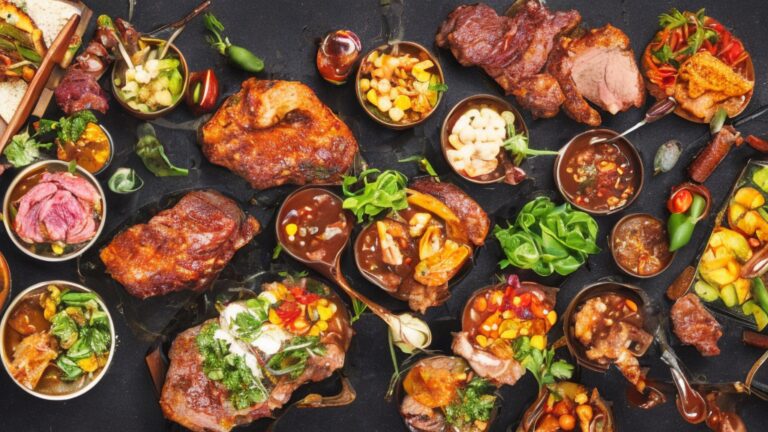Coffee Loophole: The Secret to Better Coffee at Home
The Coffee Loophole Recipe: The Secret to Better Coffee at Home ☕
I’ve been there. You wake up, craving that perfect cup of coffee, the kind that makes your senses sing. But then you take a sip of the brew you made at home and… disappointment. It’s just not quite right. It lacks that vibrant, nuanced flavor you get at your favorite coffee shop.
Sound familiar? You’re not alone. For years, I struggled with subpar coffee at home, until I stumbled upon a simple secret – the coffee loophole.
This isn’t about fancy gadgets or expensive beans. It’s about mastering a few fundamental techniques that unlock a world of flavor in your everyday coffee. It’s about brewing a cup that rivals anything you’d find at a specialty cafe, all from the comfort of your own kitchen. Ready to discover the secrets of the coffee loophole? Let’s dive in.
Unveiling the Coffee Loophole: Simple Techniques for a World of Flavor
The Importance of Freshness:
Stale coffee is the biggest culprit for dull, lifeless flavor. Think of it like this: fresh coffee beans are like vibrant, juicy fruit, bursting with flavor. But as they sit around, they lose their moisture and aroma compounds, becoming stale and bland, like a withered apple.
How to tell if your coffee is fresh:
- Check the grind date. If it’s been more than two weeks, the coffee is likely stale.
- Look for a vibrant aroma. Fresh beans have a rich, inviting smell.
- Inspect the beans. Freshly roasted beans have a light, oily sheen.
Storing coffee beans properly:
- Airtight container: Store beans in an airtight container to prevent oxidation and moisture absorption.
- Cool, dark place: Store your beans in a cool, dark place, away from heat and light.
Mastering the Grind:
The grind size is crucial because it directly affects the extraction process. Imagine a fine grind like tiny pebbles, allowing water to quickly pass through, while a coarse grind is like larger rocks, offering more resistance to the water.
Different grind sizes and their effects:
- Fine grind: Used for espresso, where a high pressure forces water through the finely ground beans.
- Medium-fine grind: Ideal for pour-over and drip coffee, offering a balanced extraction.
- Coarse grind: Best for French Press, where water is steeped over longer periods.
Invest in a quality burr grinder:
A good burr grinder produces a consistent grind, essential for extracting the optimal flavors from your beans. A blade grinder, on the other hand, creates uneven grinds, leading to inconsistent extraction and a less balanced taste.
Water is Key:
The quality of your water plays a significant role in the final flavor of your coffee. Impurities in water can interfere with the extraction process, leaving your brew with unwanted flavors.
Use filtered water:
Filtered water removes impurities like chlorine and minerals that can affect taste. Consider investing in a water filter pitcher or installing a filter on your tap.
Achieving the ideal water temperature:
Water temperature is crucial for optimal extraction. The ideal range for brewing coffee is around 200°F (93°C). Water that’s too hot can burn the grounds, while water that’s too cold won’t extract the desired flavors.
Beyond the Basics: Advanced Tips for Unlocking Flavor
Experiment with alternative brewing methods:
While traditional drip coffee makers are convenient, exploring other brewing methods can open a whole new world of flavors. Here are a few options:
- Pour-over: This method involves slowly pouring hot water over coffee grounds in a filter cone, allowing for precise control over extraction. This results in a bright, clean cup with distinct flavor notes.
- Aeropress: This versatile device combines elements of French Press and espresso, yielding a concentrated, rich brew.
- French Press: This method involves steeping coffee grounds in hot water, resulting in a full-bodied, aromatic cup.
Explore resources for further learning:
The world of coffee is vast! There are countless resources online and in libraries dedicated to coffee brewing techniques, bean origins, and roasting methods.
Finding Your Perfect Coffee Loophole Recipe:
The beauty of the coffee loophole is that it’s a journey of personal discovery. There’s no one-size-fits-all recipe – you get to tailor it to your own tastes. Here’s a starting point:
- Type of Coffee: Light roast, medium roast, dark roast
- Grind Size: Medium-fine, coarse
- Water Temperature: 200°F (93°C)
- Brewing Time: 2-3 minutes
- Ratio: 1:16 coffee to water (e.g., 1 tbsp coffee to 16 fl oz water)
Adjust these variables to find your perfect cup! Experiment with different beans, grind sizes, brewing methods, and water temperatures to discover what brings out the best flavor for your palate.
The Coffee Loophole Recipe: A Step-by-Step Guide

Choose Your Weapon:
The brewing method you choose will significantly impact the flavor and texture of your coffee. Here’s a breakdown of popular methods:
| Brewing Method | Pros | Cons |
|---|---|---|
| Drip | Simple, consistent | Can be bland, limited control |
| Pour-over | Precise control, flavorful | Requires practice, can be messy |
| French Press | Full body, easy | Requires more cleanup, can be coarse |
| Aeropress | Versatile, concentrated | Requires a bit of practice |
Gather Your Tools:
- Burr grinder: For consistent grind size.
- Gooseneck kettle: For precise temperature control.
- Filters: For pour-over, drip, or Aeropress.
- Brewing device: Based on your chosen method (pour-over cone, French Press, Aeropress, etc.).
- Scale: For accurate coffee-to-water ratio.
- Thermometer: For checking water temperature.
- Mug or cup: To enjoy your perfect brew!
Step-by-Step Recipe:
Let’s say you’ve chosen the pour-over method. Here’s a step-by-step guide:
- Grind your coffee beans: Grind your beans to a medium-fine consistency.
- Heat your water: Heat your water to 200°F (93°C).
- Rinse the filter: Place the filter in the pour-over cone and rinse with hot water. Discard the water.
- Add the coffee grounds: Carefully pour the ground coffee into the filter cone.
- Start pouring: Pour a small amount of hot water over the grounds to bloom, allowing the coffee to release its gases.
- Pour in a circular motion: Slowly pour the remaining hot water over the grounds in a circular motion.
- Let it brew: Allow the coffee to brew for 2-3 minutes.
- Enjoy! Once brewed, remove the filter and pour the coffee into your mug or cup.
Remember: This is just a starting point. Feel free to adjust the brewing time, water temperature, and grind size based on your preferences.
Unlocking the Secrets: Exploring Flavor Profiles and Roasting Techniques
Decoding Coffee Roasting:
Coffee beans are roasted to varying degrees, each resulting in a unique flavor profile.
- Light roast: Beans are roasted for a shorter period, resulting in a lighter color and a bright, acidic flavor.
- Medium roast: Beans are roasted longer, resulting in a more balanced flavor with hints of chocolate and caramel.
- Dark roast: Beans are roasted for the longest period, resulting in a darker color and a bold, smoky flavor.
Visual guide to roasting levels:
| Roasting Level | Bean Color | Flavor Profile |
|---|---|---|
| Light Roast | Pale Brown | Bright acidity, floral, fruity notes |
| Medium Roast | Medium Brown | Balanced flavor, chocolate, caramel |
| Dark Roast | Dark Brown | Bold, smoky, bitter |
Choosing the Right Beans:
Different coffee origins have distinct flavor characteristics. Here are a few examples:
- Ethiopian Yirgacheffe: Known for its bright, floral, and citrusy flavors.
- Colombian Supremo: Renowned for its smooth, balanced flavor with hints of chocolate and nuttiness.
- Sumatra Mandheling: Characterized by its full-bodied, earthy, and spicy notes.
Resources for discovering new beans:
- Online roasters: Many reputable online roasters offer a wide variety of beans from different origins.
- Local coffee shops: Visit your local coffee shops and ask for recommendations on beans and brewing methods.
Tasting Notes and Flavor Wheel:
Tasting notes are descriptors that capture the different flavors you can identify in a cup of coffee. The coffee flavor wheel is a visual guide that helps you identify and understand these notes.
Common flavor descriptors:
- Fruity: Berries, citrus, stone fruit
- Floral: Rose, jasmine, lavender
- Chocolatey: Dark chocolate, milk chocolate, cocoa
- Nutty: Almond, hazelnut, peanut
- Spicy: Pepper, cinnamon, ginger
Conclusion
The coffee loophole is a powerful tool for transforming your at-home coffee experience. By understanding the importance of freshness, grind size, water quality, and brewing method, you can unlock a world of flavor in your everyday cup. Remember, it’s a journey of experimentation and discovery. Continue exploring different beans, techniques, and recipes to find your perfect cup.
FAQ
What is the best coffee bean for the coffee loophole recipe?
There is no single “best” bean, as personal preferences vary. Experiment with different origins and roasting levels to find your favorite!
How do I know if my coffee is fresh?
Check the grind date on the bag or container. If it’s been more than two weeks, the coffee may be stale. Freshly roasted beans have a vibrant aroma and a light, oily sheen.
Can I use tap water for my coffee?
While you can, using filtered water removes impurities that can affect the taste of your brew. Consider investing in a water filter for optimal results.
Ready to elevate your coffee game? Start your coffee loophole journey today!









